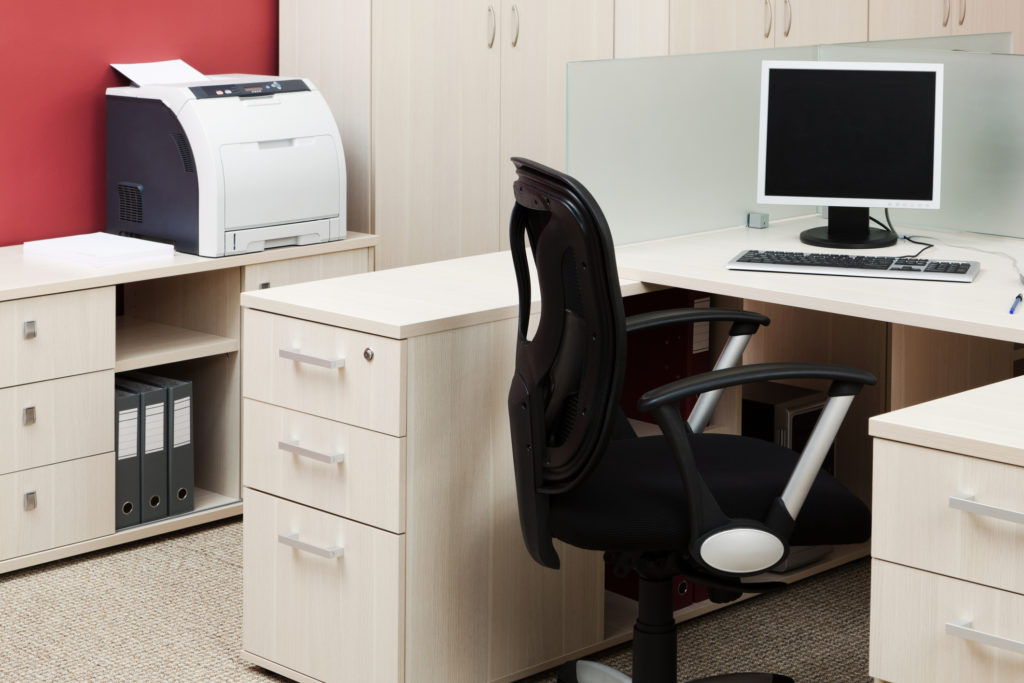Blog
How High Should My Desk Be?
Proper desk height can make or break your productivity, energy level, and quality of work. Yes, desk height (and chair height in relation to desk height) is that crucial! Desk height and other adjustable, customizable features of modern ergonomic office desks can help you avoid injury, pain, and even future disability by maintaining proper posture and comfort at work.
Average Office Desk Height


The average static work desk or table is between 28 and 30 inches tall, which functions well for individuals in the 5’8” to 5’10” range. But what about everyone else in your workplace? By choosing an adjustable, ergonomic office desk—ideally one that can adjust from 22 inches up to 33 inches high—you can achieve the healthiest and most comfortable desk height for almost everyone.
How to Find the Right Desk Height (Hint: Use Your Elbows)
Remember: standard measurements for the “correct desk height for you” in the workplace or home office won’t take into account individual differences. People of the same overall height may have slightly different neck length, torso length, forearm length, upper arm length, etc.
The foolproof way to achieve proper desk height is to make sure that your desk surface and keyboard are at your elbow level when you’re seated at your desk (or standing at a stand-up desk or work counter). Now, you can use your keyboard and desk optimally, with shoulders relaxed and forearms bent at an approximate right angle.
How Sit-Stand Desks Help Maintain Health
Remaining in one position too long (even if it is ergonomically correct) can have a negative effect on your overall health. It’s recommended that you alternate between sitting and standing during your work hours (and at home as well) to help avoid circulatory problems and other health issues. When you change position periodically, you avoid placing too much strain or pressure on any one body part.
Standup desks allow you to easily change position at any given moment of the workday. This can help you to change up your work position* any time you want to. This variety is good for the mind (concentration) as well as the body (circulation).
*Shows models of optimal computer desk sitting positions, provided by OSHA, to guide you in setting up your desk, chair, and other office furniture accessories.
More Ergonomic Work Desk Details
Whether you’re looking for a great office desk for your commercial workplace or your home office, keep these tips in mind:
- When setting up your workstation with your new desk, make sure there is clearance under the desktop so you can move your legs freely, without banging your knees.
- Consider buying a matte finish desk to minimize workplace glare. Glare can be a significant problem with glass-topped desks.
- Choose a desk design with smoothly rounded edges on the desktop and legs. Sharp edges can easily lead to cuts, bumps, and bruises at work.
- Add keyboard trays to your desks or work tables. This allows you more adjustment options, so you can get into a proper working position (shoulders relaxed and forearms roughly parallel to the floor).
- Use monitor arms or risers to position your computer monitor (or laptop screen) at a level just 2 or 3 inches below your sightline to avoid neck pain and eye strain.
- Choose an adjustable ergonomic desk chair so you can perfectly configure your workspace.
Use these tips to help you choose just the right desk for your needs!
For personalized assistance, let us know what you’re looking for and we’ll suggest appropriate options. Contact the office furniture experts at PVI today or call us at (301) 694-7162 now.

